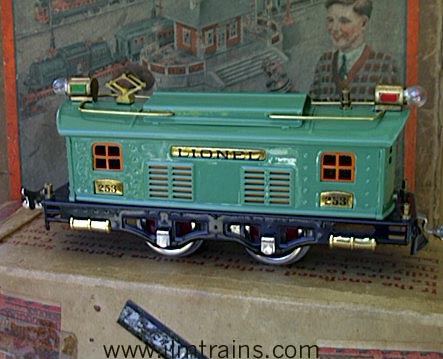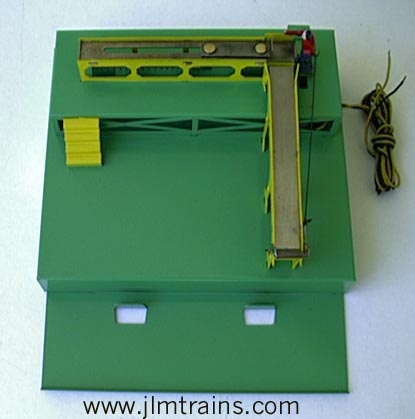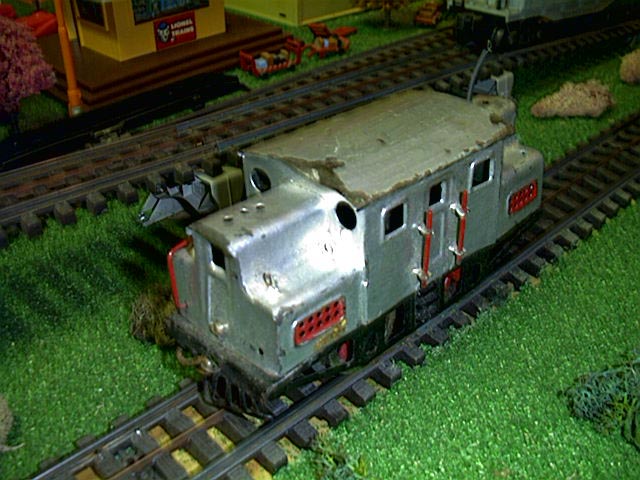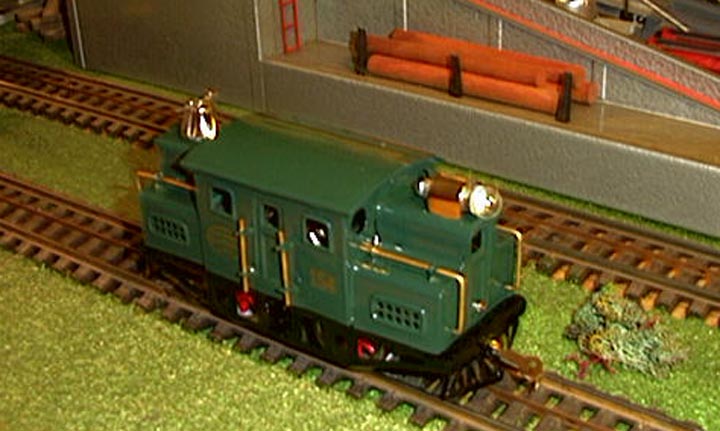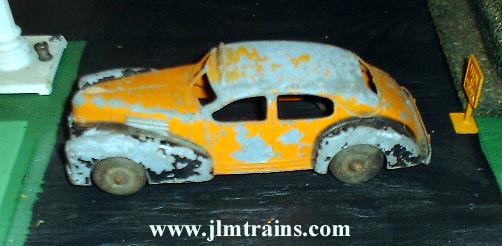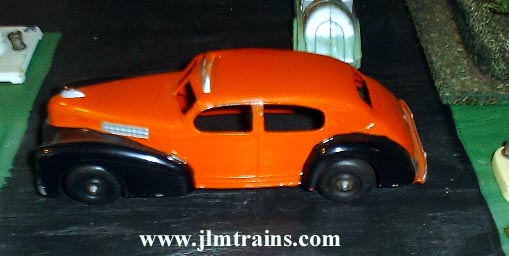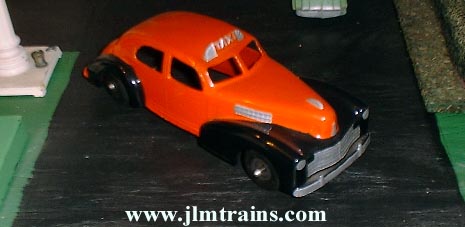
JLM Trains, L.L.C.
Restorations
Capabilites
With over 39 years experience, we offer complete repair and restoration services on all types of toy trains and accessories. We can do just about anything from minor tune-ups to full restorations including repainting and re-lettering. We use original parts when available. If original parts are not available, we use only the highest quality reproduction parts. All of our work is guaranteed for one year. We can repaint and re-letter your trains in the original fashion or in a different way if you wish. We service the following makes and more:

What is the Difference Between a Restoration and a Repair?
Most often when a train item is brought to us, the owner opts to have it repaired. Our repair service includes all of the following:
- Complete disassembly
- Cleaning of all sub assemblies
- Testing of all components
- Replacement of any faulty or missing wiring
- Replacement of any worn or missing parts (parts in addition to service price)
- Cleaning and waxing of body or outer portions (whether it it’s a car, engine, accessory etc.)
- Re-assembly, lubrication and testing
Restorations are usually performed on metal pieces rather than plastic. The lettering methods used on the plastic trains do not lend themselves to restoration easily. The metal trains usually have their lettering applied on small brass, nickel or copper plates, or it may be rubber stamped. We can work with great results with these methods. A restoration would include all of the above services plus the following:
- All trim is removed from body or cab
- Cab, body or outer portions would be stripped of all paint, rust etc.
- All bright work is polished and lacquered (can be re-plated at additional cost)
- All parts are then primed and painted in the original fashion
- Piece is re-lettered in the original fashion using rubber stamps duplicated from the original lettering
- Finally, everything is assembled
Some Points to Consider
The value of the piece may be affected by repainting. This is mostly dependent on the condition it is in to start with. A restored piece will never be as valuable as a truly Mint original piece. Generally, a proper restoration will be graded no higher than Excellent. If the piece is in poor shape, its value will be increased by restoring it. If it is marginal, it is usually better to leave the original finish alone.
Also, the rarity of the piece comes into play. If it is an ordinary, common item, the cost of a full restoration may exceed the value of a good original. If the item is uncommon, it may be worth restoring. The analogy I like to use is having a car painted. It is well worth spending $5000 to paint a 1969 Corvette, as the value of the completed car is far more than the cost of the work. It may not be worth painting a 1969 Dodge Dart. It takes roughly the same amount of work, so the price would be the same. Unfortunately, you will probably exceed the value of the car.
This is not to discourage you from having anything restored, but just to give you a few things to think about.
Examples of our Work
Below are a few samples of a museum quality restoration. No expenses were spared on this job. All brightwork was replated, truck sides were black oxide coated, all internal parts were restored to new condition including new wheels on the engine, paint was computer matched from the inside of the car bodies so that it would reflect the original color rather than the faded and aged outside color, all lettering was applied in the original color and fashion and everything is then clear coated. The result is a train that looks just as good or better than it did more than 75 years ago.
Even simple items can be restored to a very nice condition. Below is an American Flyer 779 Loading Platform. Although it is held together primarily with twisted metal tabs and rivets, we can disassemble and restore it. The finished product looks as good as a mint original.
Another example of a near basket case brought back to life. This time a 1918 vintage Lionel No. 154 Locomotive.
We received this 256 Lionel “O” Gauge Locomotive completely disassembled and stripped. After paint and lettering, many new parts and completely restoring the motors and running gear, it is just as nice as when it left the factory in 1924.
Here is an example of a non-train toy restoration. This is a die cast Hubley Taxi Cab. The same methods are employed as in any other restoration, and the result is a toy car that looks as good as it did in the 5 and Dime Store more than 50 years ago.
In some instances we have to fabricate parts to replace unavailable originals. Here is a reverse bracket from a Lionel No. 706 Locomotive from 1915. The original is in the rear and a replacement is in the front.
Here is another instance only this time it is the pilot on a cast iron Ives No. 5 clockwork steam engine. The first photo shows the recast piece inserted and fit into place. The second photo shows the finished product.
We Can Rebuild And Repair Certain Small Areas Of Plastic Bodies.
Click below to see a repair to a Lionel FM cab. The right corner was chipped off. The first photo shows the repair prior to the first coat of paint. The second shows the yellow paint applied. The last photo shows the completed repair.
We use Only DUPONT Professional Refinishing Products

All Work Guaranteed One Year

